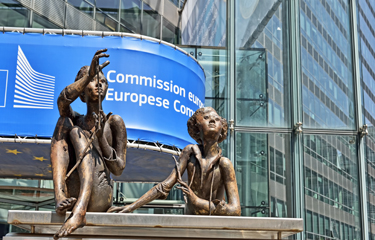Aquaculture and fisheries concerns in the European Union are receiving additional funding as the European Commission finalizes Partnership Agreements with its 27 Member States.
Partnership Agreements are strategic documents that program investments from the cohesion policy - the E.U.'s main investment policy – and the European Maritime, Fisheries, and Aquaculture Fund (EMFAF) for 2021 to 2027.
Denmark is to receive EUR 808 million (USD 864 million) for its cohesion policy investment strategy targeting competitive, innovative, and sustainable growth. Of that EUR 200 million (USD 214 million) of its EMFAF allocation will be used to improve resource efficiency and the competitiveness of small and medium enterprises (SMEs) in the aquaculture sector. Also included in the funding is the protection and restoration of marine and freshwater biodiversity, through innovation and development of selective fishing gear and river restoration.
The European Commission announced Denmark’s commitment to including fisheries and aquaculture industries in the nation’s goal of a greener, more connected, and more inclusive country, – a key E.U. priority.
“Europe’s blue economy plays a crucial role in decarbonising our economy. This Partnership Agreement will allow Denmark to build a resilient, sustainable and low-carbon fisheries and aquaculture sector and to further develop its aquatic environment and resources,” Virginijus Sinkevičius European Commissioner for Environment, Oceans and Fisheries said.
According to the Organization for Economic Co-operation and Development (OECD), fisheries and aquaculture production in Denmark In 2018, produced 0.8 million metric tons (MT) of fish and shellfish, with a value of USD 697.2 million (EUR 668.3 million). Just 20 percent of the value came from aquaculture and 80 percent from wild fisheries. The total volume was up 14 percent, in 2008 and value increased by 11 percent.
The Partnership Agreement with France includes EUR 567 million (USD 596 million) in funding for aquaculture and fisheries, within an overall strategic investment worth EUR 18.4 billion (USD 19.4 billion).
In 2018, France, which is a net importer of seafood, produced 0.8 million MT of fish and shellfish with a value of USD 2.3 billion (EUR 2.2 billion). Approximately 36 percent of this value came from aquaculture and 64 percent from fisheries.
The E.U. announced that the EMFAF will play a crucial role in supporting coastal communities, decarbonising the economy, and improving the sectors’ resilience, while boosting take-up of innovative solutions to overcome current challenges. It will also facilitate the ecological transition of the fishing and aquaculture sectors in France and help to bring seafood and aquaculture products in line with the expectations of consumers for sustainable food choices.
“The funding will create favorable conditions for the harmonious deployment of maritime and coastal activities and contribute to the development of a sustainable blue economy in both mainland France and its Outermost Regions,” Sinkevičius said.
Photo courtesy of skyfish/Shutterstock







